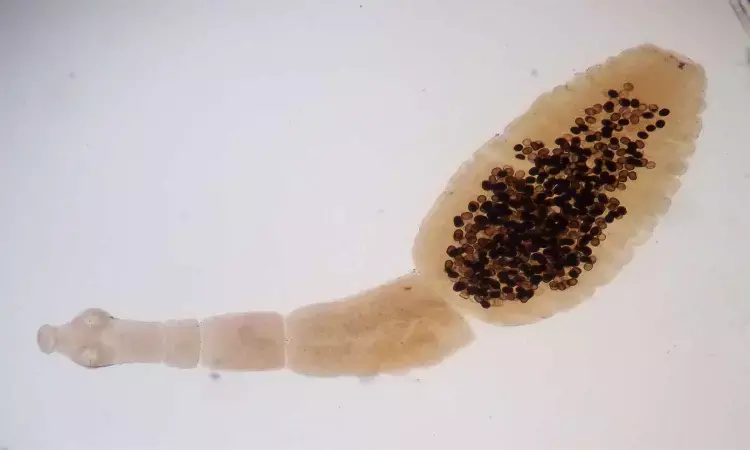- Home
- Medical news & Guidelines
- Anesthesiology
- Cardiology and CTVS
- Critical Care
- Dentistry
- Dermatology
- Diabetes and Endocrinology
- ENT
- Gastroenterology
- Medicine
- Nephrology
- Neurology
- Obstretics-Gynaecology
- Oncology
- Ophthalmology
- Orthopaedics
- Pediatrics-Neonatology
- Psychiatry
- Pulmonology
- Radiology
- Surgery
- Urology
- Laboratory Medicine
- Diet
- Nursing
- Paramedical
- Physiotherapy
- Health news
- Fact Check
- Bone Health Fact Check
- Brain Health Fact Check
- Cancer Related Fact Check
- Child Care Fact Check
- Dental and oral health fact check
- Diabetes and metabolic health fact check
- Diet and Nutrition Fact Check
- Eye and ENT Care Fact Check
- Fitness fact check
- Gut health fact check
- Heart health fact check
- Kidney health fact check
- Medical education fact check
- Men's health fact check
- Respiratory fact check
- Skin and hair care fact check
- Vaccine and Immunization fact check
- Women's health fact check
- AYUSH
- State News
- Andaman and Nicobar Islands
- Andhra Pradesh
- Arunachal Pradesh
- Assam
- Bihar
- Chandigarh
- Chattisgarh
- Dadra and Nagar Haveli
- Daman and Diu
- Delhi
- Goa
- Gujarat
- Haryana
- Himachal Pradesh
- Jammu & Kashmir
- Jharkhand
- Karnataka
- Kerala
- Ladakh
- Lakshadweep
- Madhya Pradesh
- Maharashtra
- Manipur
- Meghalaya
- Mizoram
- Nagaland
- Odisha
- Puducherry
- Punjab
- Rajasthan
- Sikkim
- Tamil Nadu
- Telangana
- Tripura
- Uttar Pradesh
- Uttrakhand
- West Bengal
- Medical Education
- Industry
Rare case of Hydatid cyst in soft tissue reported

Dr.Biniam at Djibouti medical centre has reported a rare case of Hydatid cyst in soft tissue. The case has been published in the Journal of medical case reports.
Hydatid disease is due to infection by the tapeworm Echinococcus granulosus in its larval or cyst stage. Of all cases of hydatid cyst, 70% of them are formed in the liver. A few of the ova pass through the liver and are caught in the pulmonary capillary bed; ova that escape the pulmonary capillary bed enter systemic circulation, forming cysts in the lung, spleen, brain, or bones. Some cysts spontaneously collapse and may disappear or calcify, while other cysts steadily increase in size, displace or compress healthy tissue and organs, and may become complicated. The annual growth rate of the cyst is usually approximately 1–3 cm in diameter.
It is very rare for a hydatid cyst to be located in soft tissues which are seen only in 0.5–4.7% of patients.
A 22-year-old Somali had presented to the surgical referral clinic in March 2019 with the main complaint of progressive swelling associated with pain over the left plantar side of his foot. The patient had noticed the swelling 1 year prior to the presentation. There was no history of trauma to the site, no difficulties of walking, no discharge from the swelling, and no lesions noticed on other sites also the patient had no abdominal pain or discomfort, no chest pain or cough.
With the initial impression of callus; the patient was prepared for a minor surgical operation to remove the mass after having completed a full pre-op investigation.
A transverse incision was made over the lump, followed by dissection of the subcutaneous tissue. Upon exposing the subcutaneous tissue, a typical endocyst membrane covering the hydatid cyst was encountered. Further dissection revealed the pericyst and endocyst very clearly. Protecting the surrounding area with iodine-soaked gauze, the endocytic membrane was aspirated, revealing a sandy content.
It was then injected with hydrogen peroxide and re-aspirated. Later, the whole intact membrane was dissected out; a pericystic cavity lavage was done using hydrogen peroxide too. The subcutaneous tissue layers and the skin were closed in the standard manner. The specimen was sent for pathology which reported a germinative layer that consisted of daughter cysts and brood capsules with scolices and clear fluid content.
"Although the hydatid cyst is rare, a high index of suspicion and identification of the typical endomembrane of the cyst could guide intraoperative diagnosis. Chemotherapy with albendazole for a short duration of 15 days could suffice for a subcutaneously located hydatid cyst if the cyst is removed intact with no local spillage" states Dr.Biniam Ewnte.
The report concludes that no local or systemic recurrence been identified in the patient so far.
For further reading click on the link below,
MBBS
Dr K B AARTHI-has completed MBBS from SRM UNIVERSITY TAMIL NADU,Her interest is in the field of Pediatrics and Anaesthesia, also passionate in doing research and publishing articles.She joined Medical Dialogues in 2020 and publishes health news and medical updates. Email: editorial@medicaldialogues.in. Contact no. 011-43720751,9786713226
Dr Kamal Kant Kohli-MBBS, DTCD- a chest specialist with more than 30 years of practice and a flair for writing clinical articles, Dr Kamal Kant Kohli joined Medical Dialogues as a Chief Editor of Medical News. Besides writing articles, as an editor, he proofreads and verifies all the medical content published on Medical Dialogues including those coming from journals, studies,medical conferences,guidelines etc. Email: drkohli@medicaldialogues.in. Contact no. 011-43720751


